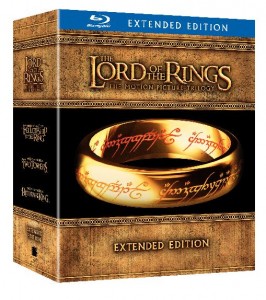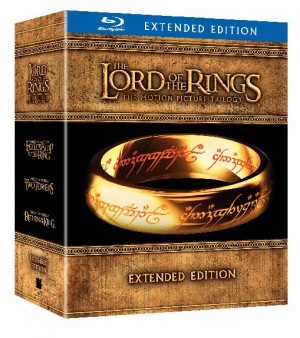‘The Fellowship of the Ring’ is a fitting beginning
Peter Jackson achieved the seemingly impossible when he released his prolific Lord of the Rings trilogy in the early part of the 21st century. The scope of the three films is extraordinary, and when taken together, the movies rival the beauty and wonder of the original novels by J.R.R. Tolkien.
It’s not exaggerated to say that Jackson changed filmmaking forever. Place The Lord of the Rings trilogy up there with the best of the bunch: Star Wars, The Godfather, The Matrix.
The saga kicks off with The Fellowship of the Ring, a near-perfect movie that sets the tale in motion.
We come to visit the varied inhabitants of Middle Earth, a fantasy world that is wholly original, yet in some ways modeled after Earth itself. There are wizards (like Gandalf the Grey, played by Ian McKellen), dwarves (like Gimli, played by John Rhys-Davies), elves (like Legolas Greenleaf, played by Orlando Bloom) and, of course, the hobbits.

Hobbits are small men and women with hairy feet; they share a heavenly patch of land known as the Shire and keep to their peaceful, rambunctious ways. Of the hobbits, perhaps the most popular is Bilbo Baggins (Ian Holm), the Shire’s unofficial godfather, a man who has seen life around Middle Earth and come back to tell the community of his adventures. One of his proteges and relatives is Frodo Baggins (Elijah Wood), the one hobbit who becomes the Anakin Skywalker of The Lord of the Rings. It is in Frodo’s travails that we find our hero.
All of the different life forms of Middle Earth, both good and evil, are brought together into an apocalyptic struggle when the evil forces of Lord Sauron begin to formulate. The dark leader is on a quest to retrieve a special ring that has the power of ruling over everyone and everything in the land. That ring, as audience members come to learn, is in the possession of Bilbo Baggins. But its power has haunted and changed the hobbit into a different person with questionable intentions.
Gandalf, ever the helpful wizard, steps in and realizes that the aging Bilbo must relinquish the ring and hand it off to someone who will be able to sneak past Sauron’s forces and destroy it in Mount Doom in the depths of Mordor. The person who is given this unenviable and unbelievable task is none other than Frodo Baggins.
Tolkien, a master storyteller who relied on rich detail and complex plot points, gives Frodo a few friends to join him along the way. First there are his fellow hobbits: Sam Gamgee (Sean Astin), Pippin Took (Billy Boyd) and Merry Brandybuck (Dominic Monaghan). Then comes Legolas, Gimli and Aragorn (Viggo Mortensen), a man with a great destiny before him. This ragtag group of defenders must scale the heights and sink into the inner depths of Middle Earth to find the convoluted way to Mount Doom. The odds are stacked against them, especially since Sauron teams up with the similarly named Saruman (Christopher Lee) to be his earthly vessel of malfeasance.
Along the way, the ‘fellowship’ encounters Sauron and Saruman’s deadly forces, including banshee beasts flying on dragons and mangled monsters known as Orks. Jackson, who earned his keep as a director of horror films before The Lord of the Rings, definitely makes all three of his fantasy films scary as hell. The Orks are hideous creatures to look at, and they genuinely instill a deep sense of fear. Their roars and burnt skin show an obvious talent when it comes to makeup and character design.
But it’s not just in the scares that Jackson succeeds. His script, with Fran Walsh and Philippa Boyens, is able to reduce the complex Fellowship novel into an understandable movie. It never feels too long or too short. As the opening chapter of Frodo’s adventures, Fellowship exceeds almost every benchmark. It’s an invigorating cinematic experience that has both a heart and a backbone. The visuals are stunning, the music by Howard Shore is sweeping and grandiose, and the final showdown in the forest between the Orks and the defenders of the ring is everything one could hope for in a finale (even though it’s only the finale of the first part of this saga).
As a director, Jackson is a visionary. He never lets the story get ahead of him, and he gives each character enough time to grow in front of the audience’s eyes. There’s hardly a moment that is wasted. If The Lord of the Rings turned into solely a visual effects spectacular with little regard for story or characters, the trilogy would be forgotten in a heartbeat. Instead, because Jackson and his crew did their homework, audiences until the end of time will have these three films to cherish and learn from.
The Fellowship of the Ring is a brilliant testament to the power of the movies. When the film finishes, it’s hard not to run to the DVD player and pop in part two right away.
Note: Try watching Jackson’s extended edition, which is now available on DVD and Blu-Ray. It adds quite a few minutes of extra scenes, all of them worthy of inclusion.
By John Soltes / Publisher / John@HollywoodSoapbox.com-
The Lord of the Rings: The Fellowship of the Ring
-
2001
-
Directed by Peter Jackson
-
Written by Jackson, Fran Walsh and Philippa Boyens, based on the book by J.R.R. Tolkien
-
Starring Elijah Wood, Ian McKellen, Cate Blanchett, Sean Astin, Viggo Mortensen, Sean Bean, Orlando Bloom, Billy Boyd, Ian Holm, Dominic Monaghan and John Rhys-Davies
-
Running time: 178 minutes
-
Rated PG-13 for epic battle sequences and some scary images
-
Bubble score: 4 out of 4
-
Click here to purchase The Lord of the Rings: The Fellowship of the Ring on DVD.

